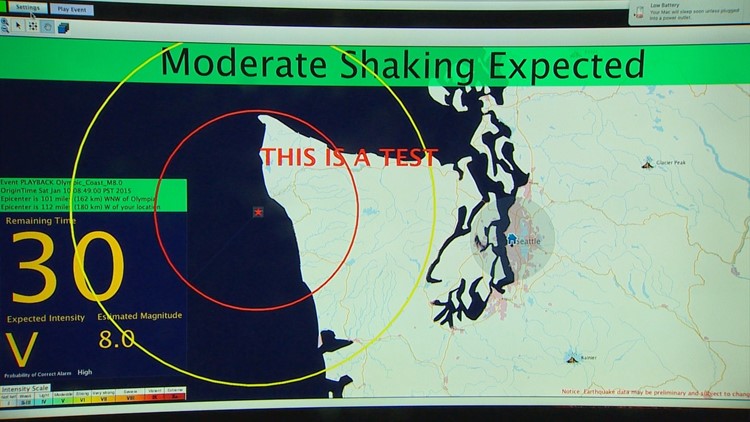Washington, Oregon, and California are now all together in one earthquake early warning system called ShakeAlert.
Earthquake early warning is not a forecaster or predictor of earthquakes, but it is a high-tech way to warn people how many seconds they have before the shaking hits them once an earthquake has started.
The University of Washington hosts the Pacific Northwest Seismic Network, which for years has monitored quake and volcanic seismicity in Washington and Oregon. The institutions have also participated in the experiments to develop the technologies that will sound the alarm.
For instance, Seattle would get about 50 seconds of warning before moderate shaking hit following a magnitude-eight quake hitting off Washington’s coast along a giant fault known as the subduction zone. However, if a quake of a potential magnitude 7.2 were to hit on the Seattle Fault, which runs from west of Bainbridge Island, under the city’s southern industrial district and due east roughly paralleling Interstate 90, the warning would be negligible.
The idea, especially when connected to automated devices, could do things like automatically shut down valves belonging to the region’s water systems, preventing loss of critical fresh water supplies following the quake. That idea is part of a pilot project slated for Washington in six months or so.
The system is already utilized in the San Francisco Bay area. A pilot project is planned for the Los Angeles School District to give kids and teachers time to get underneath desks before the shaking would arrive.
The system is considered incomplete and not yet ready for broader public application, as there is only funding for about 700 of the 1,700 large motion seismometers needed. Most of the current 700 seismometers are located in California, which was earlier in Shake Alert’s development.



